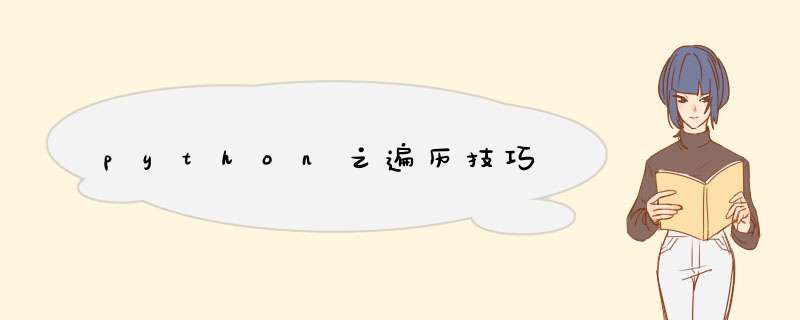
字典遍历:关键字和对应的值可以使用 items() 方法同时解读出来;
eg:
knights = {'gallahad': 'the pure', 'robin': 'the brave'}
for k, v in knights.items():
print(k, v)
gallahad the pure
robin the brave
序列遍历:索引位置和对应值可以使用 enumerate() 函数同时得到;
eg:
for i,v in enumerate([i for i in range(2,5)]):
print(i,v)
0 2
1 3
2 4
同时遍历两个或更多的序列,可以使用 zip() 组合;
eg:
questions = ['name', 'quest', 'favorite color']
answers = ['lancelot', 'the holy grail', 'blue']
for q, a in zip(questions, answers):
print('What is your {0}? It is {1}.'.format(q, a))
What is your name? It is lancelot.
What is your quest? It is the holy grail.
What is your favorite color? It is blue.
反向遍历一个序列,首先指定这个序列,然后调用 reversed() 函数;
eg:
for i in reversed(range(1, 10, 2)):
print(i)
9
7
5
3
1
要按顺序遍历一个序列,使用 sorted() 函数返回一个已排序的序列,并不修改原值:
eg:
basket = ['apple', 'orange', 'apple', 'pear', 'orange', 'banana']
for f in sorted(set(basket)):
print(f)
apple
banana
orange
pear
欢迎分享,转载请注明来源:内存溢出

 微信扫一扫
微信扫一扫
 支付宝扫一扫
支付宝扫一扫
评论列表(0条)